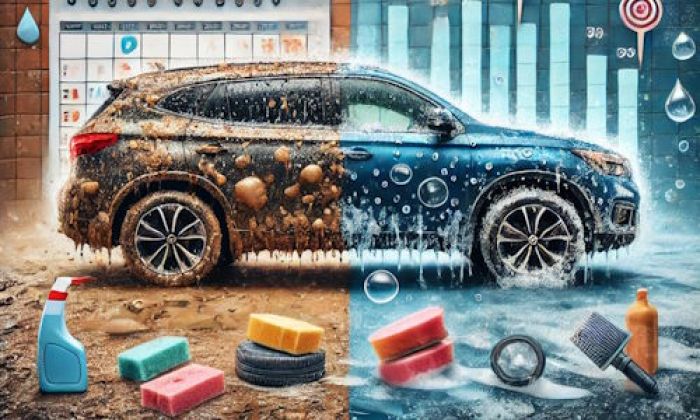If you're having trouble getting your automatic gear shifter to engage, it can be a frustrating experience. It could be due to a number of issues, from faulty wiring or connections to problems with the transmission itself. In this article, we will discuss some of the most common causes of an automatic gear shifter not engaging and how they can be addressed.
Gear shifter problems highlights
- Level of importance:High
- Reasons:Shifter damage, wiring problems, software glitch
- Needed expertise:Medium
- Needed tools:Basic tools plus diagnostic tools
- Time taken:0.5-4 hours
- Can you drive? Yes, if it shifts
- Possible issues: No way to move your car, shifter is broken, need for tow truck.

How Automatic Gear Shifter Works?
Automatic gear shift technology revolutionizes the way you drive, allowing for seamless and effortless shifting between gears without having to manually engage each one yourself or operate the clutch. This is achieved by using sensors, computers, and actuators.
The sensors measure different engine parameters, such as speed and RPMs. These signals are then processed by the computer, which determines when it is time to switch gears. The actuator then engages the clutch and changes the gear.
The main components of an automatic gear shift system include a transmission control module (TCM), a variety of sensors, solenoids, and valves, and an electronic control unit (ECU). The TCM is responsible for controlling the shifting process. It uses input from various sensors and decides when it is time to shift gears. The ECU then sends a signal to the solenoids and valves, which control the clutch, allowing for smooth gear shifts.
Unfortunately, these components can become damaged or malfunction due to wear and tear, electrical issues, or other problems. If any of these components fail, the automatic gear shifter will not engage, causing the car to remain stuck in one gear.
Why Might an Automatic Gear Shifter not Engage Properly In a Car?
Some of the most common causes of automatic gear shifters not engaging properly in a car include low transmission fluid, a faulty shift solenoid, worn-out drivetrain components such as broken gears or clutches, and other issues.
Let's explore each of these possibilities in more detail.
1) Low Transmission Fluid
If the level of transmission fluid falls too low, then shifts may become difficult or impossible to engage. If you notice that the gear shifter is not engaging properly, check the transmission fluid level and top it off if necessary. You may have leaks somewhere in the engine that needs to be repaired.
2) Faulty Shift Solenoid
The shift solenoid controls gear shifts in an automatic transmission. If the shift solenoid fails, then you may experience problems with engaging gears. You will need to replace the shift solenoid to fix this issue.
3) Worn-Out Drivetrain Components
Over time, the internal components of a car's drivetrain can become worn out or broken. This includes the gears, clutches, and other components that are responsible for shifting gears. If these components are damaged or worn out, then you may experience difficulty engaging gears. A damaged shifter cable can also cause problems with gear engagement.
If the shifter cable is damaged or worn out, then it will not be able to properly move the gear selector from one gear to another. You may need to replace the shifter cable to fix this issue and other worn drivetrain components in order to get your gear shifter working properly again.
4) Issues with an Electronic AT Selector Switch
In some vehicles, the gear shifter is operated by an electronic AT selector switch. If this switch fails, then you may not be able to engage gears properly. You will need to have the switch repaired or replaced in order to get your gear shifter working again.
5) Electrical Issues
Finally, electrical issues can also cause gear shifters to not engage properly. This could include a faulty wiring harness, an issue with the vehicle's computer system, or even a shortage in the electrical system. You will need to have a mechanic diagnose and repair any underlying electrical issues in order to fix this problem.
How Can You Prevent This from Happening in the Future or Extend the Life of Your Gear Shifter?
Yes, there are some simple steps you can take to help prevent gear shifter problems and extend the life of your gear shifter.
First, regularly inspect the gear shift lever and linkage for wear or damage. Check that all of the hardware is intact and not loose or rusty. Tighten any loose bolts as needed. If you notice any significant wear or damage, replace the parts immediately.
Second, use a lubricant periodically on the gear shift lever and linkage to reduce friction and wear. Use a high-quality lubricant specifically designed for automotive applications so that it doesn't attract dirt and grit, which can worsen the problem.
Third, keep your gear shifter clean. Regularly wipe down the gear shift lever and linkage with a soft cloth dampened with mild soap and water. This will help to keep dirt and grime from becoming embedded in the parts and causing premature wear or damage.
Finally, if your vehicle is equipped with an automatic transmission, be sure to use the correct fluid and keep it at the proper level. Low fluid levels can cause gear shift problems, so make sure to check your owner's manual for more information about when and how much fluid to add.
By taking these few straightforward measures, you can guarantee that your gear shifter remains in stellar condition and continues to function appropriately for a prolonged time.
What are some of the potential consequences of not fixing a problem with your gear shifter as soon as possible?
If you do not address a problem with your gear shifter as soon as possible, you may end up causing more damage to the transmission. This can result in expensive repairs and the replacement of the entire transmission.
Additionally, driving with an improperly engaging gear shifter is unsafe and could lead to an accident on the road if left unchecked for too long. Therefore, it is important to have any problems with your gear shifter diagnosed and repaired as soon as possible.
How much will it cost to have a mechanic look at your car and diagnose the problem with the gear shifter system?
The price of a mechanic to inspect and repair your gear shifter's dilemma will depend upon the severity of the issue. Generally, an initial diagnosis can cost you between $50-$150, with incremental fees dependent on what supplemental repairs must be done.
Maybe, it's worth buying a new car instead of repairing the old one?
It depends on the situation. If the car is relatively new and the problem with the gear shifter system isn't too severe, then it might make sense to keep your current car and have a mechanic take a look at it.
However, if you are dealing with an older car that has been having recurring problems with its gear shifter system, then it might be more cost-effective in the long run to invest in a new car that is more reliable. Ultimately, you will need to weigh the pros and cons of each situation to determine which option is best for you.
Bottom Line
Having a problem with your gear shifter can be frustrating and dangerous. It is important to have any issues with your gear shifter diagnosed and repaired as soon as possible in order to protect yourself and your car.
Diagnosing the issue can cost between $50-$150, while repairs could vary depending on the severity of the issue. Ultimately, you will need to take the time to weigh all of your potential options in order to determine what is best for you and your car.
About the authors
The CarAraC research team is composed of seasoned auto mechanics and automotive industry professionals, including individuals with advanced degrees and certifications in their field. Our team members boast prestigious credentials, reflecting their extensive knowledge and skills. These qualifications include: IMI: Institute of the Motor Industry, ASE-Certified Master Automobile Technicians; Coventry University, Graduate of MA in Automotive Journalism; Politecnico di Torino, Italy, MS Automotive Engineering; Ss. Cyril and Methodius University in Skopje, Mechanical University in Skopje; TOC Automotive College; DHA Suffa University, Department of Mechanical Engineering






Add comment